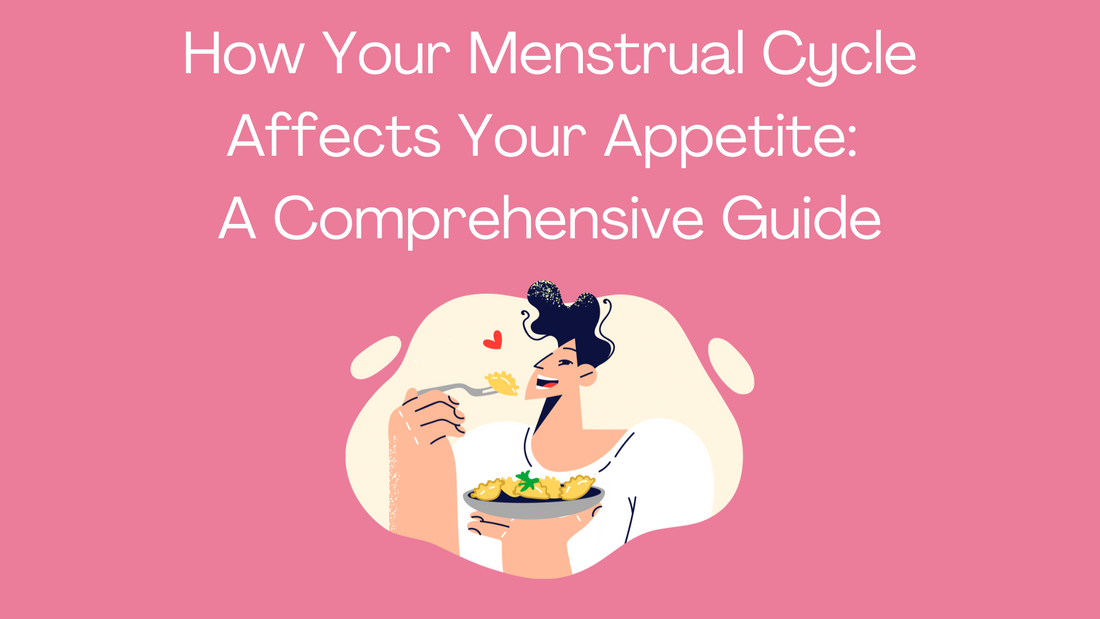The menstrual cycle is a complex process that involves various physiological changes in a person's body, affecting not only the reproductive system but also influencing mood, energy levels, and appetite. Many people notice significant variations in their hunger and cravings before, during, and after their menstrual period. Understanding these changes can help people manage their diet and overall well-being more effectively.
The Phases of the Menstrual Cycle
To understand the fluctuations in appetite, it's essential to break down the menstrual cycle into its four primary phases: the menstrual phase, the follicular phase, the ovulatory phase, and the luteal phase.
-
Menstrual Phase (Days 1-5): This phase begins on the first day of menstruation and typically lasts 3 to 7 days. Hormone levels, particularly estrogen and progesterone, are at their lowest during this phase. The body sheds the uterine lining, leading to menstrual bleeding.
-
Follicular Phase (Days 1-13): Overlapping with the menstrual phase, the follicular phase continues until ovulation. During this phase, the pituitary gland releases follicle-stimulating hormone (FSH), which stimulates the ovaries to produce follicles, each containing an egg. Estrogen levels gradually rise, leading to the thickening of the uterine lining.
-
Ovulatory Phase (Day 14): Ovulation typically occurs around day 14 of a 28-day cycle. A surge in luteinizing hormone (LH) triggers the release of a mature egg from the ovary. Estrogen levels peak, and some women may experience a slight increase in appetite.
-
Luteal Phase (Days 15-28): After ovulation, the luteal phase begins, characterized by increased progesterone production. This hormone prepares the uterine lining for potential pregnancy. If pregnancy does not occur, estrogen and progesterone levels drop, leading to the start of the menstrual phase.
Appetite Fluctuations Throughout the Cycle
-
Before Menstruation (Luteal Phase): The luteal phase is notorious for causing premenstrual syndrome (PMS) symptoms, including increased hunger and cravings, particularly for carbohydrates and sugary foods. Higher progesterone levels can stimulate appetite, and the body may crave more calories to prepare for the potential energy demands of pregnancy. Additionally, serotonin levels, which help regulate mood and appetite, can drop during this phase, leading to cravings for comfort foods that temporarily boost serotonin levels.
-
During Menstruation: For many people, appetite may decrease during menstruation due to hormonal shifts and physical discomfort such as cramps and bloating. However, some may still experience cravings and increased hunger, driven by the body's need to replenish energy and nutrients lost during menstruation.
-
After Menstruation (Follicular Phase): Following menstruation, as the follicular phase progresses and estrogen levels rise, appetite often stabilizes. Higher estrogen levels can suppress appetite, and many people feel more energized and less prone to cravings. This phase is generally a good time to focus on balanced meals and healthy eating habits.
Managing Hunger and Cravings
Understanding the link between hormonal changes and appetite can help people make informed dietary choices. Here are some tips to manage hunger and cravings throughout the menstrual cycle:
-
Stay Hydrated: Sometimes, thirst is mistaken for hunger. Drinking plenty of water can help manage cravings and maintain overall health.
-
Eat Balanced Meals: Include a mix of proteins, healthy fats, and complex carbohydrates in your diet to keep blood sugar levels stable and reduce the intensity of cravings.
-
Exercise Regularly: Physical activity can help regulate appetite, improve mood, and reduce stress, which can all contribute to better dietary choices.
-
Mindful Eating: Pay attention to your body's hunger and fullness cues. Eating mindfully can help you avoid overeating and choose healthier options.
-
Nutrient-Rich Foods: Focus on foods rich in iron, magnesium, and B vitamins, which are often depleted during menstruation. Leafy greens, nuts, seeds, and lean proteins are excellent choices.
Conclusion
Understanding the relationship between the menstrual cycle and appetite can empower people to make healthier food choices and manage their cravings more effectively. By recognizing the patterns and planning accordingly, people can maintain a balanced diet and support their overall well-being throughout the month. Remember, each experience is unique, so it's important to listen to your body and find what works best for you.

